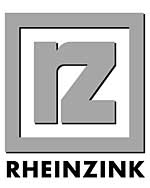Architectural Zinc: From Gray to Green
A traditional building material finds a green future
This course is no longer active
Sponsored by RHEINZINK America, Inc.
Zinc Check: Did You Know?
- Zinc is constantly transported through the environment in a process called natural cycling. Released from rocks by sun, wind, ice and rain, and in larger amounts by forest fires, volcanoes and dust storms, natural zinc is transported to rivers, lakes and ocean where sediment and sea spray carry it further and the process begins again. The exact concentrations of zinc in nature vary continuously according to location, weather and even season-the leaves falling in autumn increase the concentration of zinc in the soil and water.
- Among the conclusions of an extensive 2001 report on zinc in the environment and human health by the World Health Organization, "Zinc EH 221, 2001" (available online atwww.inchem.org), is the following "The essential nature of zinc, together with its relatively low toxicity inhumans and the limited sources of human exposure, suggests that normal, healthy individuals not exposed to zinc in the workplace are at potentially greater risk from the adverse effects associated with zinc deficiency than from those associated with normal environmental exposure to zinc."
- Zinc-covered telegraph poles installed in the Australian outback in the late 19th century continue to be in good shape today.
- Zinc in all applications is a valuable commodity in the marketplace, and much of the zinc used today was first used years ago and probably many times since. You use zinc a great deal, whether you know it or not, in your car, batteries, electronic components, and many other applications, including the pennies in your pocket which, since 1982, are mainly composed of zinc.
- At least 30 percent of the zinc used in all applications worldwide comes from recycled zinc products, a number that is growing as the technology rapidly evolves for capturing even minute amounts of zinc, from the coatings on galvanized steel to the dust released during processing. Zinc is recycled at all stages of production and use-for example, from scrap that arises during the production of galvanized steel sheet, or is created during manufacturing and during installation -not just at the end of its product's service life.
- It is estimated that almost 80 percent of the total zinc that could be recycled with current methods is recycled.
- For architectural-grade zinc building materials, the picture is particularly favorable; between 90 and 95 percent is recycled.
- Depending on the exact product and application, special temporary organic coatings can be applied to protect the zinc surfaces during transportation and installation, and coatings can be applied on the underside of roofing products to protect against moisture that could be trapped in poorly ventilated roof situations. These coatings require no maintenance during the products' operating life.
- Emissions of zinc into atmosphere and water have been drastically reduced over the last twenty years. Extensive testing shows near- background levels (or, in another measure, levels in the optimal range) in the sea, in Greenland ice, in the Rhine River and many other locations (see the World Health Organization report cited earlier). Controlled emissions (e.g., point source emissions) from industrial processes; fugitive emissions resulting from mining, handling or transport operations or from leakages from buildings and insufficient ventilation; and diffuse emissions from the use of zinc-containing products have all been substantially reduced. More efficient emission control technology and changes in zinc refining methods and other industrial processes have resulted in decreases of emissions of 73 percent to air and 83 percent to water during the period 1985 to 1995 (Source: Royal Belgian Federation of Non-Ferrous Metals, 1995). These data are confirmed by the results of the U.S. Toxics Release Inventory during the period 1988 to1993.
- In addition to better technology and management practices, the reduction of zinc present in the atmosphere is due to another important factor: corrosion of exposed zinc surfaces has decreased markedly during the last two decades, as a direct consequence of the decreasing acidity of the air in the industrialized world, as a result of stringent control of sulphur dioxide emissions. The reduction of acid rain due to controls instituted in industrial countries in the past twenty years have not only reduced emissions into the atmosphere, but are also contributing to even longer life in zinc material surfaces, thus completing the circle by reducing corrosion from the surfaces.
|
Originally published in Architectural Record
Originally published in December 2007









